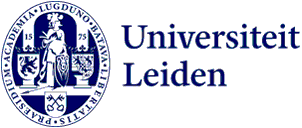Lecture | China Seminar
Can the Qing subaltern speak? Exploring Tibetan and Mongol history through the use of sub-provincial Chinese language archival sources
- Date
- Thursday 15 May 2025
- Time
- Serie
- LIAS China Seminar
- Address
-
Herta Mohr
Witte Singel 27A
2311 BG Leiden - Room
- 0.24
Abstract
The Qing-period archives of Xunhua subprefecture 循化廳, currently held by the Qinghai Provincial Archives, Xining, contain over 70,000 documents, many of which pertain to the governance and administration of Tibetan, Mongol, and other non-Han peoples. A large number of the surviving documents were composed in Tibetan and Mongol, yet to date none of these materials have been (intentionally) made available to researchers. Nonetheless, there are numerous documents that purport to capture the speech of indigenous non-Han, non-Banner people. These include stand-alone reports from local Mongol and Tibetan elites, statements and depositions from people of a variety of social statuses, and officially-generated documents that include extensive quotations or paraphrases of indigenous actors.
Given that Tibetan and Mongol language archival materials are generally not accessible (examples include the extensive administrative records of Labrang Monastery, now held in the Hezhuo Prefectural Archives), can we use the Chinese language materials to assess the vocabulary, understandings, views, or mentalities of indigenous actors? Are they representative of non-Qing perspectives or fundamentally and irrevocably distorted by a process of filtering through Qing bureaucratic practices?
This presentation will propose some answers to these questions by 1) introducing some of the documentary practices of Qing officials at the sub-provincial level and the communication system that linked indigenous authorities to the state and 2) exploring the documents generated by one long-term conflict. This case study will focus on the banner communities of the Mongol junwang based in the high-altitude pasturelands to the south of the Yellow River (Tib. Rma lho, Ch. Henan 河南, much of which is now divided between Rste khog County and the Rma lho Mongol Autonomous County, Qinghai Province) and the neighboring Tibetan Mdo ba (Ch. Duo wa 多哇) community, during the years 1876 to 1882.
